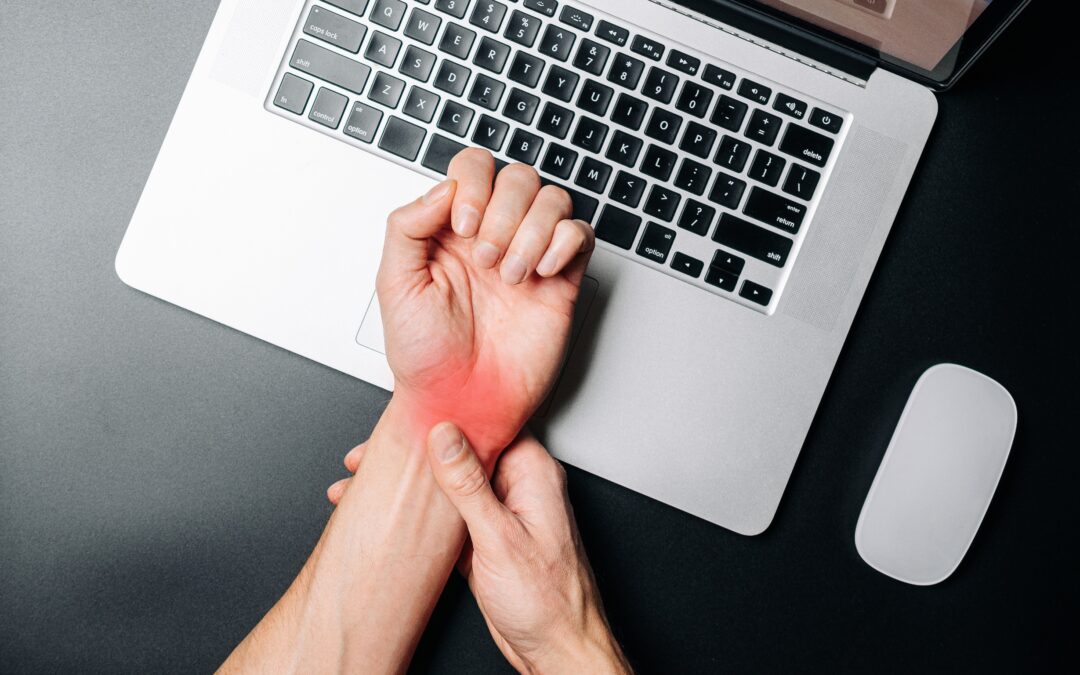Carpal tunnel syndrome (CTS) is a common condition that can cause pain and numbness in the palm of the hand. It typically affects the thumb, index, and middle finger and is most commonly found in women and those who have repetitive jobs or activities such as typing, hairdressing, and playing an instrument. If you or anyone you know is experiencing any of these symptoms, it is essential to seek evaluation and treatment promptly. In this blog post, we will discuss how CTS is evaluated and treated in a healthcare office and what you can do at home to help with the pain.
Evaluation In The Office
When evaluating CTS in our office, we always start with a thorough history of the patient. It is crucial to determine if the patient’s occupation or any repetitive motions are causing their symptoms. Additionally, females are more likely to develop this condition, so we consider gender when evaluating CTS. After the consultation, we perform some testing procedures to see if any position or motion provokes the patient’s symptoms. One of the tests we use is Phalen’s Test, which involves positioning the wrist in a particular way to see if it causes any symptoms. We also use the Reverse Phalen’s Test, which alters the positioning of hands, to see if it causes any symptoms.
Treatment In The Office
Adjustments are necessary to ensure that the joints around the median nerve are moving well. The first adjustment required is the wrist, followed by the elbow. Since the median nerve travels from the neck to the hand, adjustments to the shoulder and neck are also necessary to ensure that the entire nerve is moving. After the joints are moving, we break up the tissues around the wrist using the Graston therapy procedure. This therapy helps to break up the tissue adhesion and scar tissue, allowing the nerve to move freely. Additionally, it decreases inflammation and increases blood flow to the area. Dry needling is also performed to reduce inflammation and loosen the tissues in the hand, allowing the patient to heal better. Laser therapy can also be added to the treatment to decrease inflammation and allow the nerve to travel better. Exercises with soft mobilizations are also performed to treat the condition.
At-Home Treatment
In addition to treatment in a healthcare office, there are things you can do at home to help with CTS symptoms. The first thing you can do is stretch your hands by placing them in a prayer position and slowly raising your elbows. Do not raise them so high that you feel pain. Hold the stretch for about 30 seconds and repeat. You can also use a lacrosse ball to mobilize the tissue around the carpal tunnel. Place your wrist over the ball and roll over it to work on those muscles there. Lastly, you can perform wrist extensions by placing your wrist over a tabletop and slowly extending the wrist. Repeat this exercise to help with the musculature around the wrist and decrease inflammation in CTS. CTS can cause pain and numbness in the palm of the hand and affect daily activities. Evaluation and treatment in a healthcare office can help alleviate symptoms and improve quality of life. Additionally, there are things you can do at home to help with CTS symptoms. If you or anyone you know is experiencing symptoms of CTS, seek evaluation and treatment promptly. With proper treatment and care, you can alleviate symptoms and return to your daily activities.

